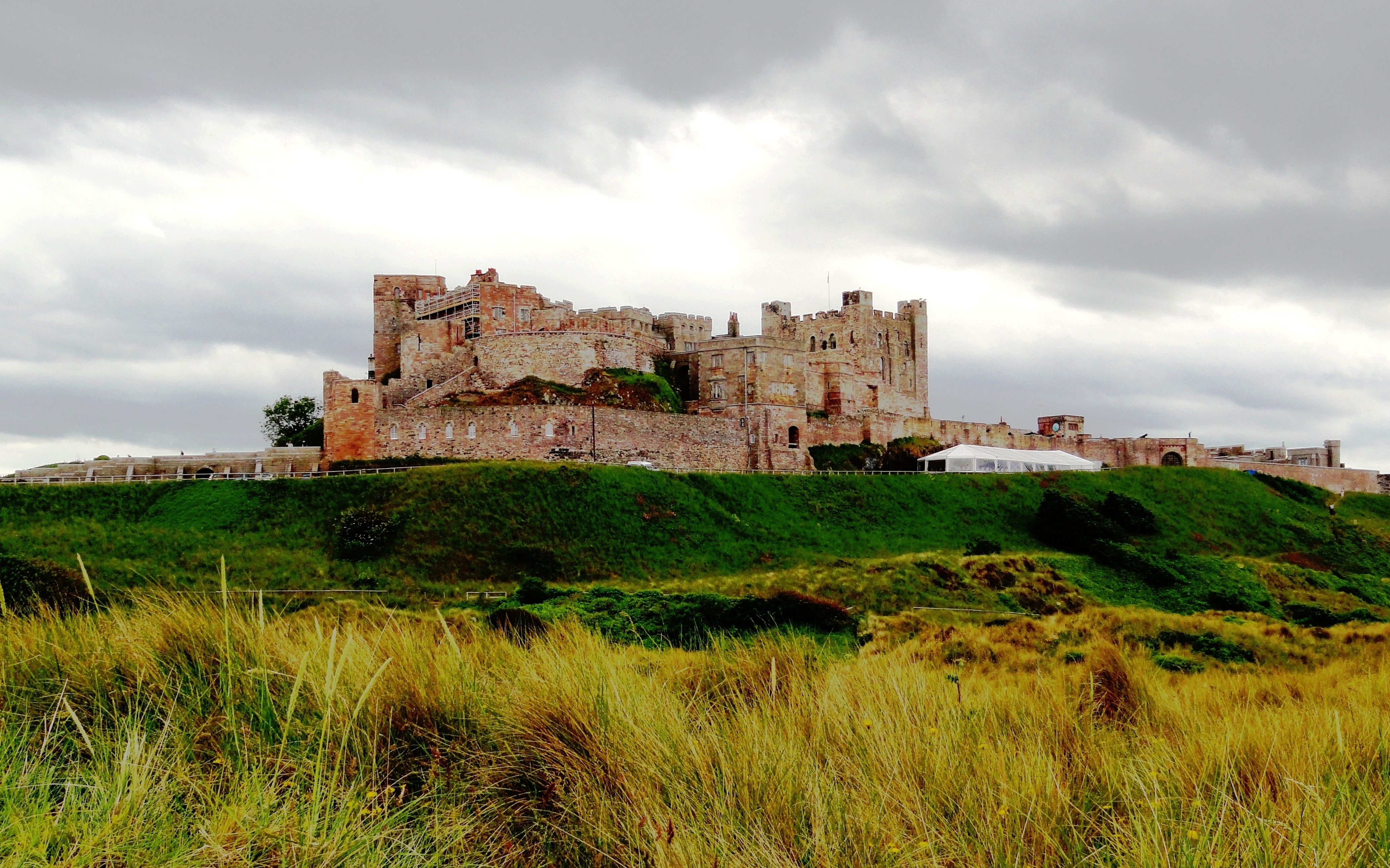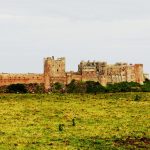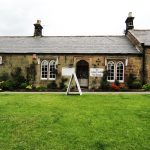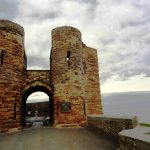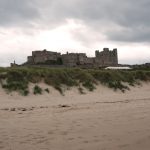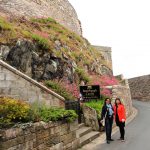Bamburgh Castle- Adventure and Spirituality
One summer we had a chance to drive up North of England to the seaside Bamburgh Castle in Northumbria . From the car windscreen i spotted the dramatic ,intimidating Castle , perched high up on a rock outcrop whose existence went back to the two thousand years. The Sandstone Castle could have been anywhere in India as it looked like many of our Indian forts. It was hard to believe that the a Castle had been built at such a great height at a time when technology was non-existent!
Parking in a large open grassland marked Car-Park; we proceeded to the once home of the Kings of Northumbria. The existence of Bamburgh Castle goes back in time when man was a Hunter and gatherer and the Romans , Saxons and Vikings had not reached here. As we went closer , we could see the Castle with two main Towers and one great Tower which was said to have been constructed with a small amount of 4 pounds!
The Castle Walk
We began our tour from the twelve century Gateway that leads to the Chapel , the Keep , the North wall and the Small tower in front of the Castle. The sight of a Drawbridge and the rocky Moat was fascinating. Another highlight of this royal domain was the 17th century wall surrounding the present Garden- center and the Duckett near the Car park. Pigeons were bred in the Duckett as food for the Castle and the Village ,in the past times .
Our tour passed through 14 rooms open to visitors :Museum- rooms, Grand Kings Hall, Cross Hall, Armoury and Victorian scullery. A unique display is the Bamburgh Royal Throne which is an artistic piece of stonework decorated with dragon designs that were Coat of Arms of the Anglo Saxon dynasty dated 1200 years back.
The excavations at the Castle also yielded a small gold ornamental Plaque shaped as a mythical beast: The Bamburgh-Beast. Additionally, a Sword dating to the 7th or 8th century has been discovered that was used in the Battle by the Kings of Northumbria. We were explained the exceptional process of Sword- making in Bamburgh area : several strands of iron were welded together and a steel edge was added to them for sharpness .These are significant discoveries from the Castle site and so are the Collections of China ,Porcelain ,Furniture, Paintings, Arms and Armour numbered at 2000!! We were informed about the Live- Archaeology Event during Summer holidays- July and August; when anybody can participate in discovering their own treasure!!
Lastly, we explored the once Laundry-Rooms of the Castle that hold the Armstrong and Aviation Artefacts Museum with interesting exhibits by the industrialist owner and restorer-Armstrong family, that include Engines, Artillery, Weaponry and Aviation Artefacts from the two World Wars.
History
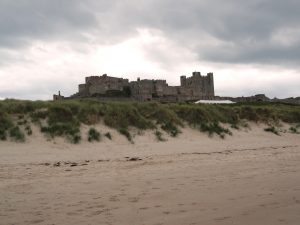 Lastly, the Guide spoke briefly about the Bamburgh-Castle Rock inhabited by Humans since pre historic time with few huts, ditches and walls to protect them. In the 7th century, Bamburgh was the capital of Northumbria or the British kingdom of this region and on the same location as the Castle today, a stronghold and Palace were built. It was the home of the native Briton ruler between 420-547AD till being captured by the Anglo-Saxon rulers and then getting destroyed by the Vikings in 993.Previously, Saint Aidan died at Bamburgh in 651AD and today’s Parish Church is dedicated to him.
Lastly, the Guide spoke briefly about the Bamburgh-Castle Rock inhabited by Humans since pre historic time with few huts, ditches and walls to protect them. In the 7th century, Bamburgh was the capital of Northumbria or the British kingdom of this region and on the same location as the Castle today, a stronghold and Palace were built. It was the home of the native Briton ruler between 420-547AD till being captured by the Anglo-Saxon rulers and then getting destroyed by the Vikings in 993.Previously, Saint Aidan died at Bamburgh in 651AD and today’s Parish Church is dedicated to him.
Next, in the 11th century ,a new Norman Castle was built on the same site but was captured by the reigning English monarch. During the infamous 15th century, War of Roses, Bamburgh was the first castle to fall to the enemy.After the War, King James-1, bestowed the war destroyed fortress to the Castle-keeper Forster- family who were Governors of the Castle for 400 years .After their bankruptcy the condition of the Castle declined.
What we saw in front of us is a totally restored Castle by Lord Armstrong – nicknamed King of Industry, who took over its ruins to re-establish its glory; in the 19th century Victorian Britain. Lord Armstrong used large Sand-stones from the Quarry three miles away, in the village below, to rebuilt the Castle with the assistance of merely horses and men!! We were to visit later ,the Grove- quarry in the village , named after the grove of trees around. At the age of 83, he modernised the Castle with Air-conditioning and construction of a Great Hall with a roof .
Today
Today, Bamburgh Castle is the ancestral home of the Armstrong family and a great Activity centre. Since 1920’s, it attracts Film and Television crew and some of the famous one’s are Ivanhoe, Mary-Queen of Scots and Elizabeth. Additionally, it is a popular Wedding and Corporate venue along with being a spot for the annual Halloween Arts & Crafts and later, Christmas Arts& Crafts, Exhibitions .
The Live-Archaeology activity of the Castle was of interest to us too and we would have liked to participate in the summer digging of the site by Archaeologists, along with my family!! Since 1996,the Bamburgh Research Project has been undertaken to discern the Archaeology and history of the Castle and areas around it. It includes a ten weeks student training digging- programme. I am writing the details of this with a hope that we can do the same for our Forts and Garhs in India; to earn funds and save them from further deterioration.
Farne Island
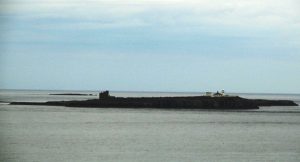 Coming out of the castle, the faraway Farne island caught out attention . This historical island is a home to 290 species of beautiful birds , along with 6000 seals. The cluster of 15-20 islands stretched in front of us for almost 7.5 km. They are surrounded by wreckage sites of several ships that are a scuba diver’s delight, today. Since time immemorial, it had been home to several Christians monks , hermits and saints till King
Coming out of the castle, the faraway Farne island caught out attention . This historical island is a home to 290 species of beautiful birds , along with 6000 seals. The cluster of 15-20 islands stretched in front of us for almost 7.5 km. They are surrounded by wreckage sites of several ships that are a scuba diver’s delight, today. Since time immemorial, it had been home to several Christians monks , hermits and saints till King
Henry-V111 dissolved the monasteries and Farne islands came under Durham Chapel. Two beautiful light houses stood out like guardians to the centuries of a spirituality , mystery and adventure of Farne islands .It was not possible to visit the Island that day due to cloudy weather and rough sea.
The Sand Dunes
The Bamburgh Castle has a mesmerizing view of infinite coast line , rocky shores with large beaches and extensive Sand dunes behind it. We were drawn like magnets to the breath taking view and this was the best place to admire as well as photograph the Castle’s awesome skyline. We trekked through the Sand dunes to reach the beach across it, not realizing the enormous distance. It seemed close by but it was a most taxing journey !! Finally, the sight of the beach , sea-water and the sky merging into one evoked a reverential awe for the creator of such beauty. The remoteness was truly memorable and resting a bit, we restarted our backward trek.
Copper-Kettle Tea-rooms
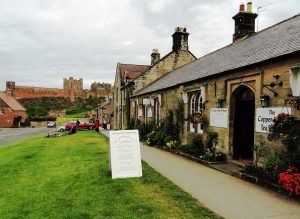 After returning from the Sand dunes; we drove down the hill, back to the picturesque beauty of the village nestling in the shadow of the magnificent Castle and reached the exquisite, historic Copper Kettle Tea room to a well deserved Tea-Break. The original building of the Tearooms was built back in 1700s as six cottages named Grove Cottages- homes to the laborers working in the Castle .Two sisters purchased this run-down building in 1956 and transformed it into a Tea room with an antique shop. Since then, the tearoom had several change of owners, each adding something to enhance its previous style.
After returning from the Sand dunes; we drove down the hill, back to the picturesque beauty of the village nestling in the shadow of the magnificent Castle and reached the exquisite, historic Copper Kettle Tea room to a well deserved Tea-Break. The original building of the Tearooms was built back in 1700s as six cottages named Grove Cottages- homes to the laborers working in the Castle .Two sisters purchased this run-down building in 1956 and transformed it into a Tea room with an antique shop. Since then, the tearoom had several change of owners, each adding something to enhance its previous style.
After admiring at the flower-filled Patio- Garden we settled in the Lounge and the Dining area to admire the Oak wood paneling and enjoy the excellent Tea with savouries and bakery products. No wonder it has been judged by the Tea Guild as one of the top twenty Tea-rooms in United Kingdom.
